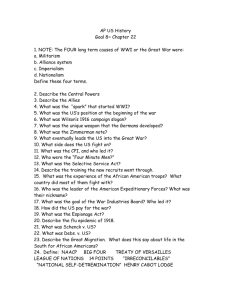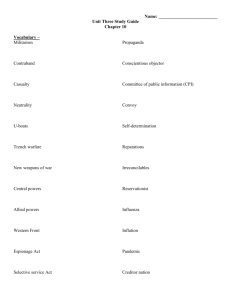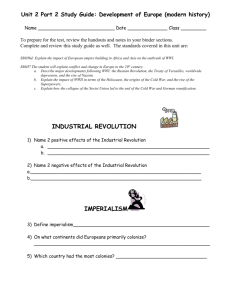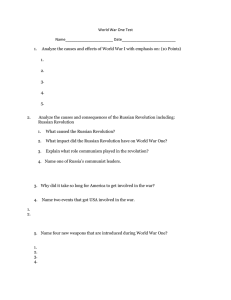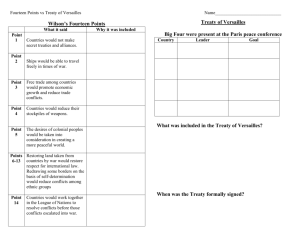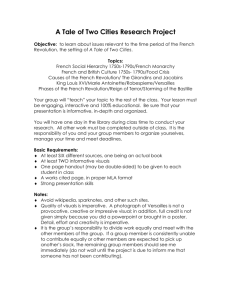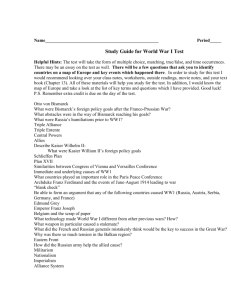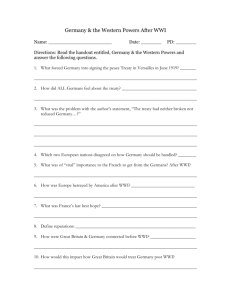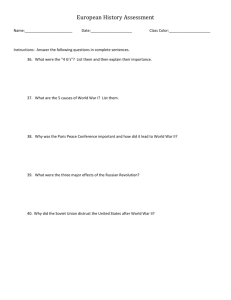The Great War
advertisement
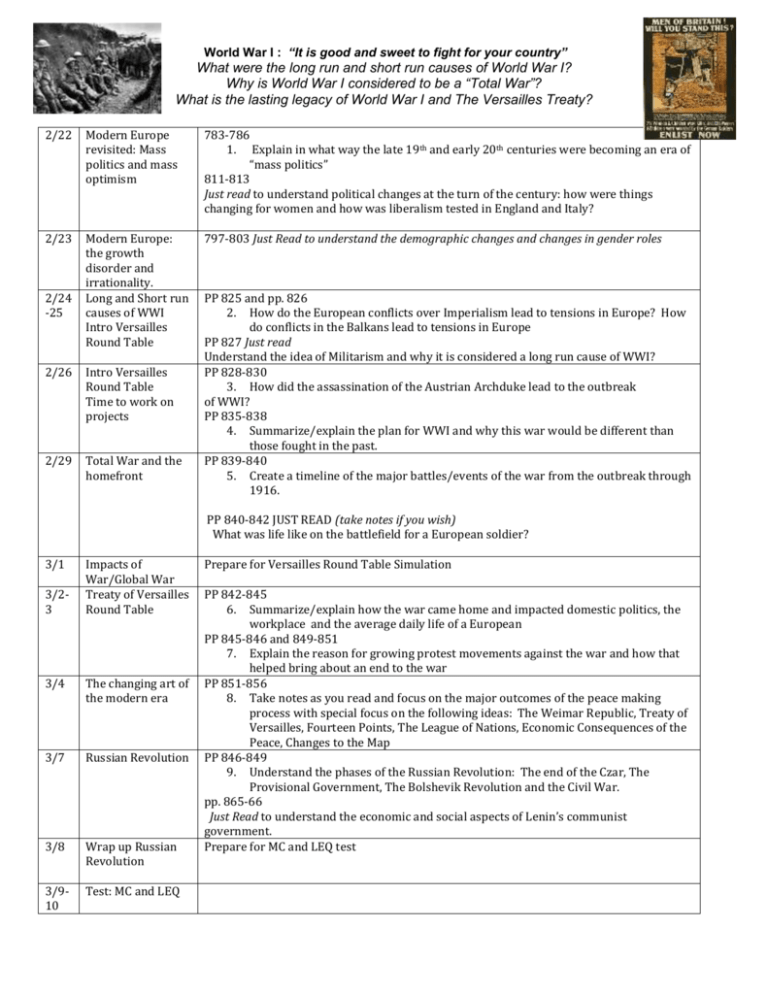
World War I : “It is good and sweet to fight for your country” What were the long run and short run causes of World War I? Why is World War I considered to be a “Total War”? What is the lasting legacy of World War I and The Versailles Treaty? 2/22 Modern Europe revisited: Mass politics and mass optimism 783-786 1. Explain in what way the late 19th and early 20th centuries were becoming an era of “mass politics” 811-813 Just read to understand political changes at the turn of the century: how were things changing for women and how was liberalism tested in England and Italy? 2/23 Modern Europe: the growth disorder and irrationality. Long and Short run causes of WWI Intro Versailles Round Table 797-803 Just Read to understand the demographic changes and changes in gender roles 2/24 -25 2/26 Intro Versailles Round Table Time to work on projects 2/29 Total War and the homefront PP 825 and pp. 826 2. How do the European conflicts over Imperialism lead to tensions in Europe? How do conflicts in the Balkans lead to tensions in Europe PP 827 Just read Understand the idea of Militarism and why it is considered a long run cause of WWI? PP 828-830 3. How did the assassination of the Austrian Archduke lead to the outbreak of WWI? PP 835-838 4. Summarize/explain the plan for WWI and why this war would be different than those fought in the past. PP 839-840 5. Create a timeline of the major battles/events of the war from the outbreak through 1916. PP 840-842 JUST READ (take notes if you wish) What was life like on the battlefield for a European soldier? 3/1 3/23 Impacts of War/Global War Treaty of Versailles Round Table 3/4 The changing art of the modern era 3/7 Russian Revolution 3/8 Wrap up Russian Revolution 3/910 Test: MC and LEQ Prepare for Versailles Round Table Simulation PP 842-845 6. Summarize/explain how the war came home and impacted domestic politics, the workplace and the average daily life of a European PP 845-846 and 849-851 7. Explain the reason for growing protest movements against the war and how that helped bring about an end to the war PP 851-856 8. Take notes as you read and focus on the major outcomes of the peace making process with special focus on the following ideas: The Weimar Republic, Treaty of Versailles, Fourteen Points, The League of Nations, Economic Consequences of the Peace, Changes to the Map PP 846-849 9. Understand the phases of the Russian Revolution: The end of the Czar, The Provisional Government, The Bolshevik Revolution and the Civil War. pp. 865-66 Just Read to understand the economic and social aspects of Lenin’s communist government. Prepare for MC and LEQ test Modern Europe: Ch. 24 “new woman” Oscar Wilde Modern Art Edvard Munch Pablo Picasso Impressionists Mass politics working class political power women’s suffrage Henrik Ibsen More on back --------------------------------------------------- Causes of War – Chapter 25 Alliance System Alfred von Schlieffen Lusitania Balkan Wars (1911) Anglo/German Naval Pact Morocco Crisis Archduke Ferdinand/ Black Hand Imperialism Wilhelm II Algeciras 1906 Alsasce-Loraine Militarism Mobilization for War War, Homefront and Peace Eastern Front Clemenceau Woodrow Wilson 14 Points Lloyd George Western Front Battle of Verdun Propaganda Versailles Treaty Homefront Trenches/Stalemate Schlieffen Plan New Technologies Orlando/ Italy Russian Revolution Lenin Rasputin Trotsky Provisional Govt. Russian Civil War Kerensky Treaty of Brest Livosk Red Army White Army Alexander Kollontai
